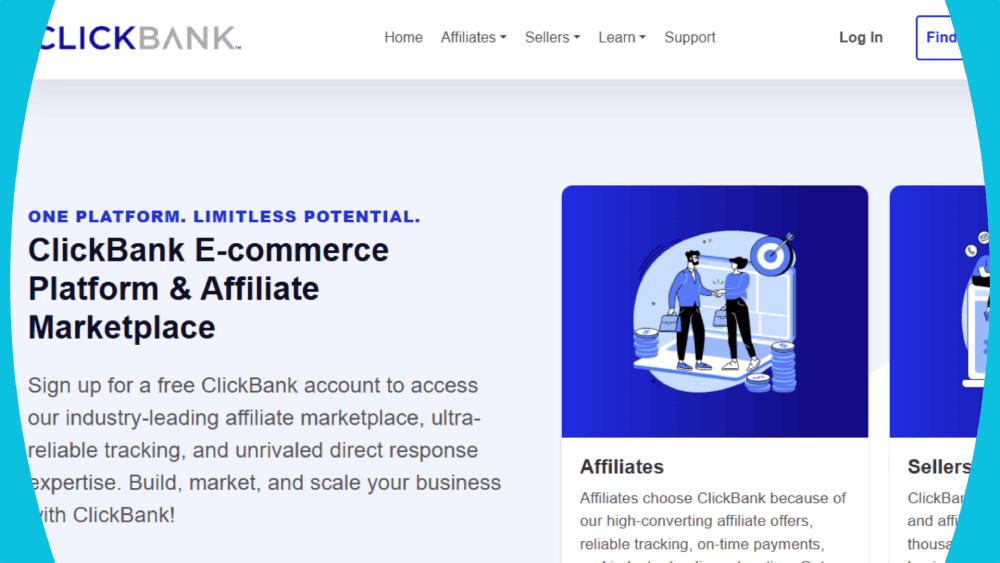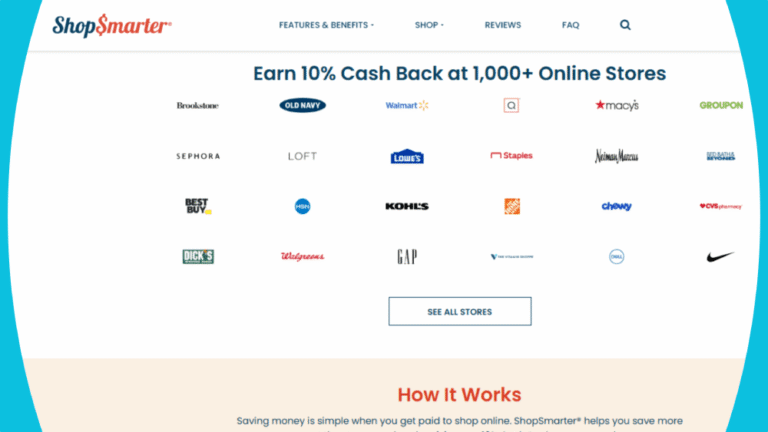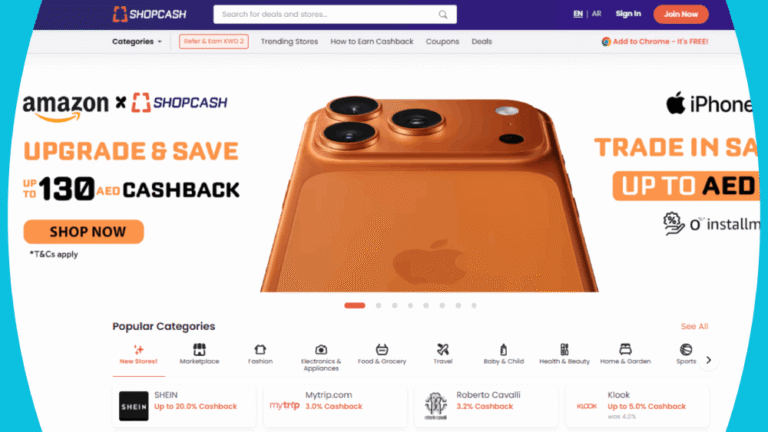New to ClickBank? Find out just how easy it really is to make money for free in 2025, how the marketplace works, what to avoid, and an action plan that works.
Table of Contents
What ClickBank is and why beginners still use it.
With ClickBank, you can make money by promoting other people’s products or services. Start by creating a free account. Next, you choose an offer that matches your audience. After that, you use a special tracking link called a HopLink. Subsequently, you send traffic to the seller’s page. Finally, you get paid when a visitor buys. According to their documentation, ClickBank refers to their links as HopLinks. You can also see how they allow you to add Tracking IDs (TIDs) to these hops. This will show you exactly where your conversions come from. This is vital for your optimization as a newbie.
One reason affiliates join ClickBank is due to the metrics in the marketplace, in addition to their transparency. The platform has a Gravity Score, which tells you how many unique affiliates have made sales for an offer over a rolling 12-week window (with more weight on recent sales). While gravity isn’t necessarily a quality score, it does indicate sales momentum, so you’re not going in blind.
ClickBank’s own glossary outlines cookie tracking: the default ClickBank cookie window is 60 days. That is to say, you’ll get credit if someone clicks your HopLink and buys within that time window, unless the vendor has one. This allows time to gain sales from those who look into products today but make a purchase later.
In conclusion, while ClickBank allows anyone to become an affiliate, certain vendors want you to request approval before promoting their product. The configuration exists on the vendor end, and it is basically the explanation why, sometimes, you see request approval even though you have an active ClickBank account.
How ClickBank Actually Works.
When you create an account, you fill out a quick account setup before being completed in a dashboard that connects to the Affiliate Marketplace. Next, you can start exploring niches, open up an offer page, and create your HopLink with an optional TID so you can tag each traffic source (for example, yt2025, blog_post_1, tiktok_quicktips). ClickBank’s support center has recently introduced some extra affiliate tracking parameters besides TIDs (released back in June 2024). This enhancement assists you in relaying more detailed information in your reports. In addition, it can monitor anything you decide to start tracking with a third-party tracking centre later.
When you look at offers, you consider their sales momentum (which we call ‘Gravity’), their commission structure, whether there’s any recurring revenue, and how good the seller’s offer page is. You also look through the seller’s affiliate resources to see if they offer angles, swipes, or creatives that are a fit. Then you test. As ClickBank tracking lasts for 60 days, it means your content can work harder for you beyond day one, especially when building free organic traffic sources.
Earning Methods to Avoid and Why They Sink Beginners
Traffic shortcuts are seductive and almost invariably backfire. Traffic exchanges swamp your links with junk clicks from window shoppers who have no intention to buy. You get no conversion and waste your time. Premade email lists (solo ads) create a different problem. If you send unwanted bulk messages, it counts as spam and harms your sending reputation while violating the website’s rules. As noted above, spam and malicious activity are explicitly prohibited under ClickBank’s Network Abuse Policy, so these things put your account at risk.
Even when a loophole seems permitted, you still fully disclose your affiliate relationship. The FTC Endorsement Guides expect you to conspicuously disclose any material connection that may impact a reasonable person’s interpretation of your endorsement, and ClickBank’s own Advertising Guidelines cite FTC compliance. A simple disclosure in plain language near the link helps to maintain trust and compliance with the rules.
The free beginner path that actually works.
ClickBank winners build trust-based organic traffic and match it to beneficial offers. Don’t just buy clicks; create clickable content that solves problems and engages customers.
Choose a niche you understand.
You don’t have to be the world’s expert, but you do need enough familiarity to teach, compare, and answer objections without fluff. Narrow beats broad. A home kettlebell training topic for new moms will yield more explicit content angles than one that focuses on fitness. And when you niche carefully, your posts and videos rank faster for long-tail searches. Plus, the things you recommend don’t feel generic.
Pick one primary free channel and commit.
You can kick off your journey to decent traffic with a simple blog like WordPress, a YouTube channel, or a TikTok/Reels presence. You can take the plunge and start a SIMPLE blog if writing is your cup of tea. Write posts that are problem-solving around very particular questions. If you prefer videoing, try recording short tutorials, comparisons, and before/after stories that direct viewers to your full review. No matter what you choose to do, embed your HopLinks with TIDs to differentiate sources and see what actually converts.
Treat each piece of content like a mini-funnel. Start with the problem or desire; teach an actionable idea; recommend your offer to solve the next step logically. Connect to the seller with a HopLink, and place a short, clear disclosure on your page or in the description of your video that you may earn a commission, precisely what the FTC expects.
You accelerate growth by repurposing. Convert a how-to blog post into an audio-visual walk-through for YouTube. Cut that video into 30-second segments for Shorts, Reels, or TikTok. Drop the most helpful part as a native answer in a relevant community (where permitted) and invite readers to your complete guide for details. If your message touches a lot of surfaces, your reader will likely hit your HopLink within sixty days.
Stay updated on the advancements of ClickBank’s tracking features. The 2024 update lets you pass more parameters in your links beyond the legacy TID, which cleanly attributes even if you stick to free channels. Later on, if you choose to use a free analytics stack or lightweight tracker, those parameters will save you hours of guesswork.
Find your niche the right way.
Select a space where you can produce at least 20 functional pieces without running out of ideas. To get real questions, have an afternoon where you read product reviews, FAQs, and community threads. Look for offers that are open in that niche in the ClickBank marketplace and note the trend in Gravity and the style of the pitch page. Remember that Gravity demonstrates recent unique affiliate sales. It does not reflect product ethics or the refund rate. So, combine it with your own judgement about the product and the landing page credibility.
Take note of the offer targets, the transformation it brings, and whether the media type of the offer (video course, e-book, membership) suits how your audience prefers to learn. As you recommend offers that suit your reader, your conversions will grow without paid traffic.
Select your no-cost platform and plant your flag.
If you write well, start a simple blog and make each article answer one particular question. Set internal links between articles so visitors smoothly flow from “what is x? Which option is the best? Finally, show people how to get started with X. If you are comfortable on camera, publish short videos that clearly demonstrate outcomes and tools. In both cases, put your HopLink with a different TID per placement, and state plainly that it’s an affiliate link.
As you publish, watch what people click. The default 60-day cookie of ClickBank means your efforts compound as more people see your work, and some return to buy later without paying for ads. That’s how exact beginners earn free money as they are still learning.
Begin making consistent, compounding effort.
Free traffic grows with consistency. For a period of ninety days, set a cadence, say two blog posts or three short videos a week, and stick to it. Revise the content that is already ranking in the search engines. Improve the video title and thumbnail, and add any missing steps that the audience asks for. Since ClickBank now supports richer link parameters, you can maintain simple tracking while still collecting enough data to double down on what works.
You also protect your progress by staying compliant. Do not use spammy tactics and attempt to hide links with link cloakers in places that do not allow affiliate links. ClickBank’s policies and FTC guidance are there for a reason. Following these will help keep your account clean and your good name intact.
Methods to avoid, so you don’t waste months.
Having uninterested people click on your pages as a result of using traffic exchanges can hurt your conversions and teach the algorithms to ignore you. Using a premade email list may seem easy; however, it usually results in poor engagement levels, high spam complaints, and a lack of trust. If your promotions rely on lies or are sent out uninvited to others, you will get hurt at least twice again. Your results will continue to be poor. You will also attract trouble related to policy. More specifically, you will find yourself in trouble under the ClickBank Network Abuse policy. Build or borrow trust, not just clicks.
Conclusion: A real-world beginner Blueprint.
Clickbank is still a good option for anyone looking to make money online and start in 2025, if you can choose a niche you know well, one free channel that you can maintain, and a consistent publishing schedule. Use HopLinks with TIDs to see which posts and videos are producing actual traffic. Use the Gravity Score to know where the momentum lies (but do not use it as gospel). Provide decent help (backed up with a real-life example) so that clicking your link is a natural step for your audience rather than an overly pushy, annoying sales tactic. You have 60 days of cookies for your free content to work when you share it on various platforms and keep putting out new pieces that get people to act.




